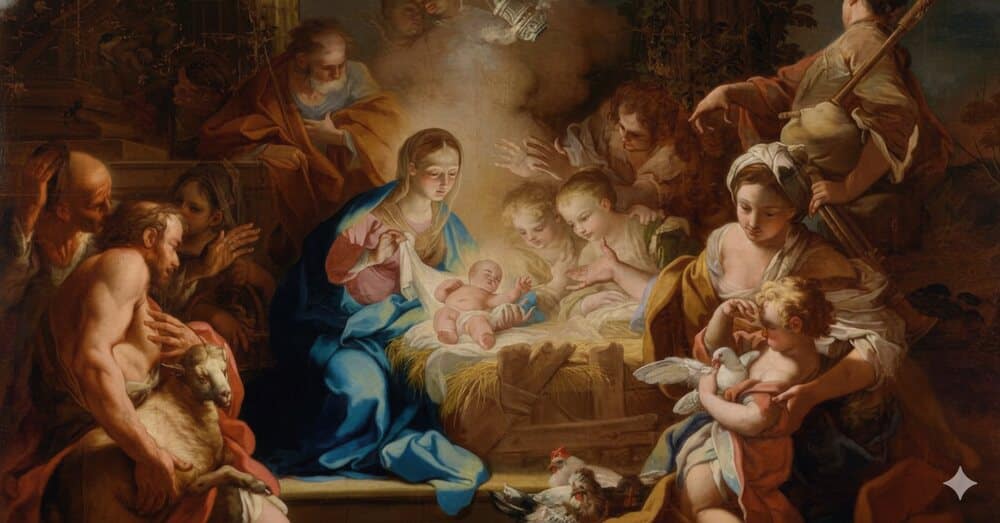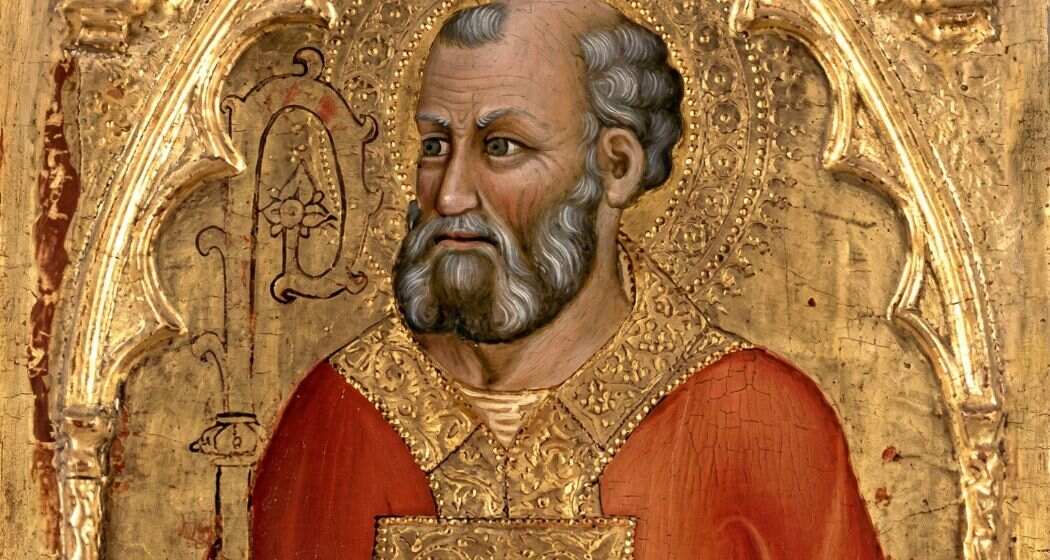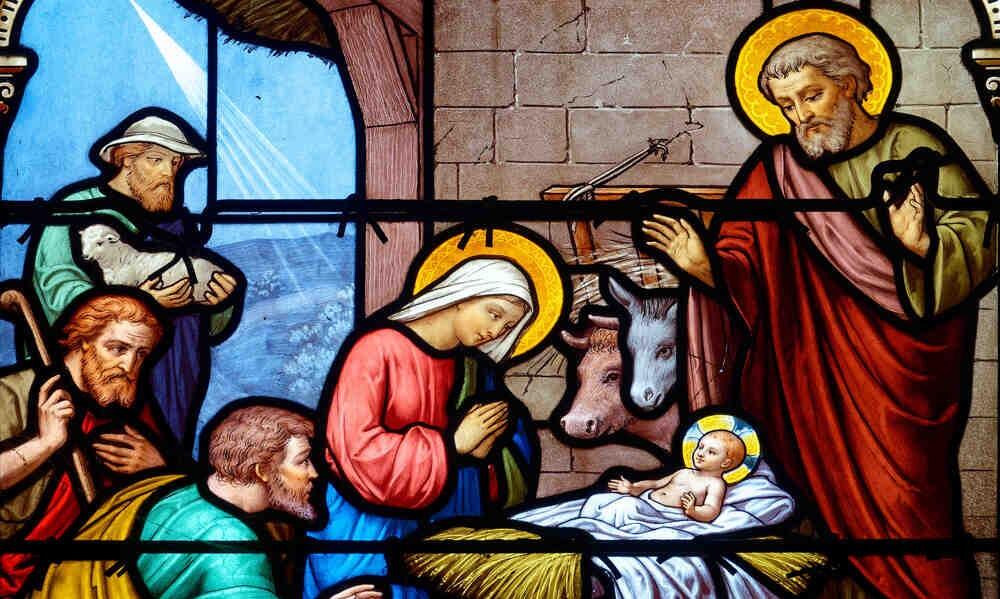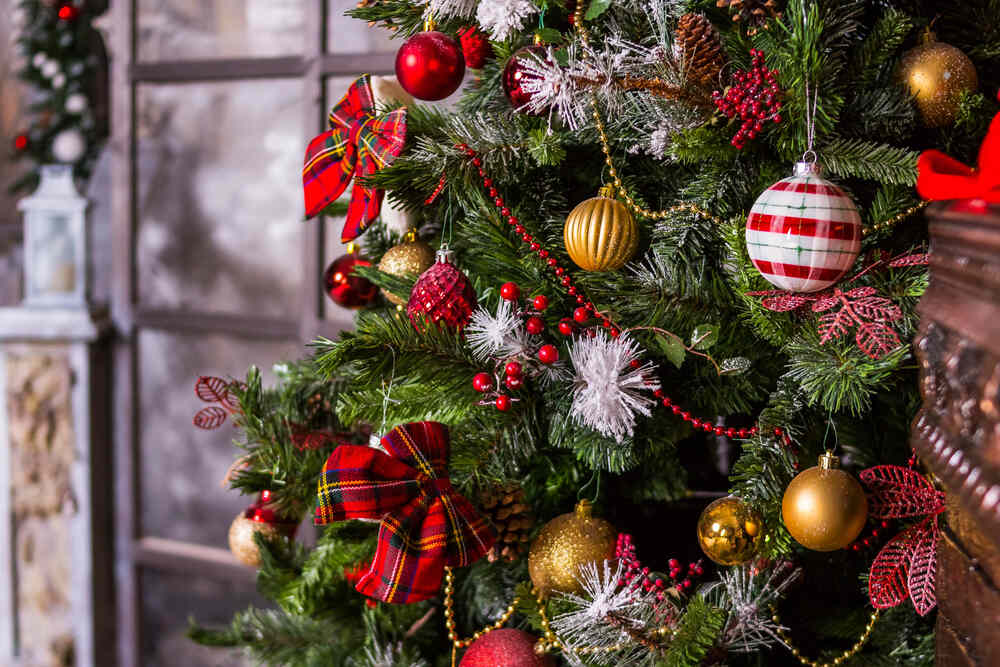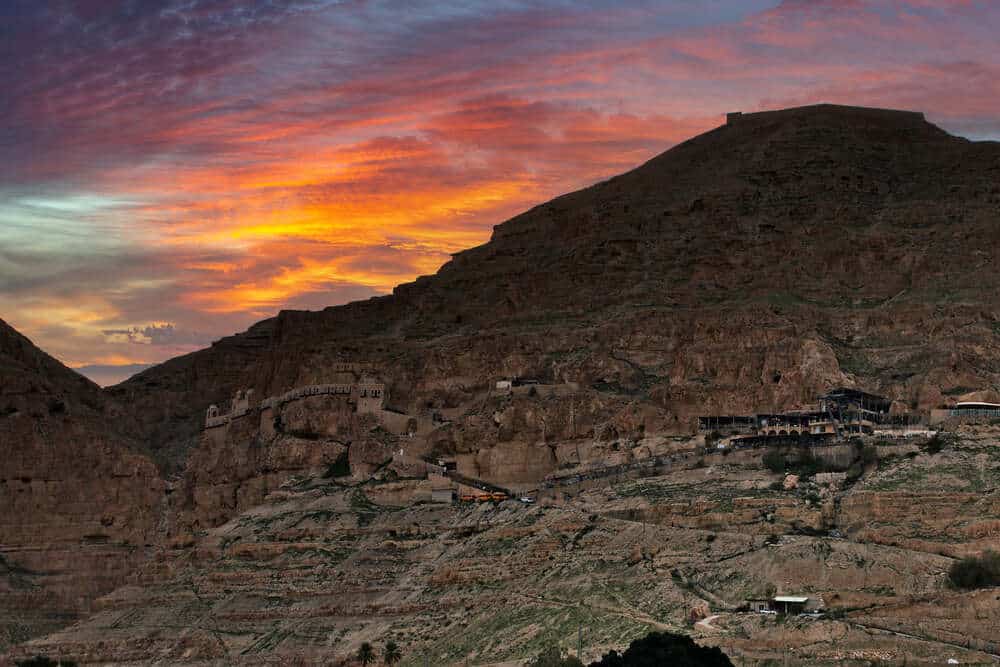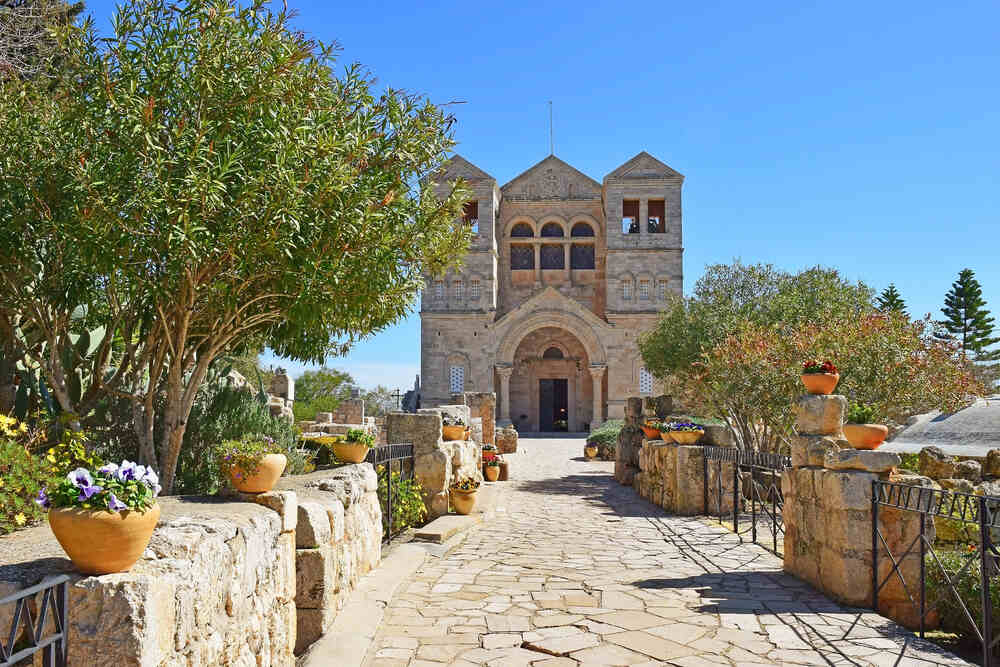In the time of Jesus, the Holy Land was under Roman rule and divided into several regions, each with its own distinct identity. To the north lay Galilee, a fertile area with a mixed population where Jesus spent much of His public life. There He grew up in Nazareth, performed miracles in Cana and Capernaum, and preached along the Sea of Galilee. This region was governed by Herod Antipas, the son of Herod the Great.
Further south was Samaria, a narrow strip of land inhabited by Samaritans—people considered impure by the Jews because of their religious differences. Jesus passed through this region and spoke with the Samaritan woman at the well, revealing that His message was meant for all peoples.
To the east of the Jordan River stretched Perea and the Decapolis, areas with a strong Greek and Roman presence. In Perea, Jesus was baptized and preached the Good News, while the Decapolis comprised ten Hellenistic cities that also heard His message of salvation.
Finally, to the south, lay Judea, the political and religious heart of the Jewish people. There stood Jerusalem, home to the majestic Temple, the center of Israel’s spiritual life. In Bethlehem, the Savior was born; in Bethany, Jesus raised His friend Lazarus from the dead; and in Hebron, the patriarchs awaited the fulfillment of God’s promise. After the death of Herod the Great, Judea came under the authority of the Roman procurators, among them Pontius Pilate.
In this article, we will follow the footsteps of Jesus through Judea, exploring three sacred sites that every pilgrim to the Holy Land should visit.
1. Ain Karem

https://www.custodia.org/en/sanctuaries/ain-karem-visitation/
Ain Karem, a picturesque village on the western hills of Jerusalem, is traditionally recognized as the birthplace of Saint John the Baptist, the forerunner of the Lord. According to the Gospel of Luke, this is also where the Virgin Mary visited her cousin Elizabeth, who was expecting John. Surrounded by cypress-covered hills, this charming village has become one of the most beloved places in the Holy Land — a site that celebrates both the joy of the Visitation and the birth of the Baptist.
Three main sanctuaries stand in Ain Karem:
- Church of the Visitation
This sanctuary commemorates the meeting between Mary and Elizabeth (Lk 1:39–56). It was here that Mary proclaimed her hymn of praise, the Magnificat, whose text is displayed on the courtyard walls in more than fifty languages.
The current two-level church was designed by architect Antonio Barluzzi between 1938 and 1955, on the foundations of a 4th-century structure attributed to Saint Helena.
The lower crypt, dedicated to Saint Elizabeth, preserves Byzantine and Crusader remains, including the so-called “Rock of the Hiding,” associated with Elizabeth and the infant John’s flight from Herod’s soldiers during the massacre of the innocents.
The upper church celebrates Mary’s glorification, with an apse depicting the Virgin surrounded by saints. On the façade, a large mosaic shows Mary journeying from Nazareth to Ain Karem.
- Church of Saint John the Baptist
Nearby stands the church dedicated to the Nativity of Saint John the Baptist, built over an ancient home venerated since the 9th century as that of Zechariah and Elizabeth. Beneath the altar lies a small grotto believed to be the very place where the Baptist was born.
The present church, rebuilt by Antonio Barluzzi in 1939, rises over successive Byzantine, Crusader, and Franciscan structures. Archaeological excavations have uncovered remains of Jewish dwellings from the 1st century and early Christian cemeteries from the 4th and 5th centuries, testifying to the long-standing devotion to the saint.
- Sanctuary of Saint John in the Desert
About three kilometers away lies the Sanctuary of Saint John in the Desert, marking the place where the child found refuge during Herod’s persecution. Here John lived in solitude and penance until the beginning of his public ministry. The site includes the sanctuary, the grotto, a spring, and the tomb of Saint Elizabeth.
- For more information about these sacred places, visit the website of the Custody of the Holy Land.
- Ubicación: P.O.Box 1704, 91170 Ain Karem – Jerusalem, Israel.
2. Bethlehem

Bethlehem is, without a doubt, the spiritual heart of Judea. Here stand two of the most cherished sites in Christianity: the Basilica of the Nativity and the Shepherds’ Field and Grotto.
- Basilica of the Nativity (Bethlehem, Palestine)
Located in Bethlehem, the Basilica of the Nativity is one of the oldest continuously used Christian churches in the world. Venerated as the birthplace of Jesus Christ, its profound spiritual and historical significance earned it UNESCO World Heritage status in 2012.
The church was built over the Grotto of the Nativity, the cave traditionally revered as the place where Jesus was born. Although the site was desecrated by Emperor Hadrian in 135 AD, Emperor Constantine and his mother, Saint Helena, ordered the construction of the first Christian basilica here in the 4th century.
Dedicated in 339, the basilica was later destroyed during the Samaritan revolts and rebuilt in the 6th century under Emperor Justinian I. Its design has endured to this day, even surviving the Persian invasion of 614—when the soldiers spared the building after recognizing depictions of the Magi dressed as Persian priests in the mosaics.
Today, the basilica serves as a shared place of worship for Greek Orthodox, Armenian, and Catholic communities, with smaller rights held by the Syrian, Coptic, and Ethiopian churches.
Pilgrims enter through the Door of Humility, just 1.2 meters (4 feet) high, which requires one to bow—a beautiful symbol of reverence before the Christ Child.
In the lower level, the Grotto of the Nativity preserves three sacred spots:
-
The Place of the Nativity, marked by a 14-point silver star inscribed in Latin.
-
The Grotto of the Manger, under Catholic care, where Mary laid the newborn Jesus.
-
Subterranean chapels dedicated to Saint Joseph, the Holy Innocents, Saint Catherine, and Saint Jerome, who is believed to have lived here while translating the Bible into Latin.
- Shepherds’ Field and Grotto
A few kilometers away, in the village of Beit Sahour, lies the site where the angels announced the birth of the Savior to the shepherds. Although the landscape has changed over time, two sanctuaries—one Catholic and one Orthodox—still commemorate that night described in the Gospel of Luke (2:8–20).
The current Shepherds’ Field stands over the remains of ancient Byzantine monasteries and caves inhabited during the time of Jesus. Archaeological excavations in the 20th century confirmed that this area was already settled during the Herodian period.
In 1953, the Franciscans built the Sanctuary of the Shepherds, designed by architect Antonio Barluzzi. Its tent-like shape evokes the shepherds’ humble dwellings, and its frescoes beautifully portray the Holy Night.
Next to it, a natural grotto continues to be used for liturgies, especially on Christmas Eve, when pilgrims gather outdoors to celebrate the Eucharist under the same stars that once shone upon the first proclamation of salvation.
- For more information about this Church, visit the website of the Custody of the Holy Land.
- Ubicación: Bethlem, Palestina.
3. Bethany

Along the road that connects Jerusalem with Jericho, just beyond the Mount of Olives, lies the Arab village of al-Azariya—the ancient Bethany of the Gospels. Its original name, Beth Hananya (“House of Ananias”), recalls a story of hospitality and faith. In the time of Jesus—as today—Bethany was a small village on the edge of the Judean desert, home to Martha, Mary, and their brother Lazarus, the closest friends of the Lord.
The Gospels recount three key moments that reveal Jesus’ deep friendship with this family:
The visit to Martha and Mary’s home, where Mary sits at His feet to listen to the Word, and Jesus teaches that only “one thing is necessary” (Lk 10:38–42).
The anointing at Bethany, when Mary pours perfume over the Master’s feet, anticipating His burial (Jn 12:1–8).
And the raising of Lazarus, the supreme sign of Christ’s victory over death (Jn 11:1–44).
Bethany is also mentioned in the Book of Nehemiah (11:32) as one of the towns rebuilt by the tribe of Benjamin after the Babylonian exile. During the Byzantine period, the village became known as the “Village of Lazarus,” which gave rise to its modern Arabic name, al-Azariya.
At the center of the village stands the Church of Saint Lazarus, a Franciscan sanctuary built over the remains of three earlier churches. Archaeologists have uncovered traces of Byzantine and Crusader buildings, 4th-century mosaics, and the foundations of the ancient Lazarium, mentioned by early pilgrims such as Eusebius of Caesarea and the pilgrim Egeria. The current church, designed by Antonio Barluzzi and consecrated in 1954, is known as the Sanctuary of Friendship. Built in the shape of a Greek cross, it is illuminated by a central skylight that symbolizes life triumphing over darkness. Beneath the dome, the words of Jesus remind every visitor: “Whoever believes in me, even though he dies, will live” (Jn 11:25).
Just a few meters away, a stone staircase leads down to the Tomb of Lazarus, preserved beside a 16th-century mosque. This sacred spot, guarded by generations of pilgrims, continues to bear witness to the faith that moves the heart of Christ. Before these ancient stones—where once rang out the words “Lazarus, come out!”—believers contemplate the eternal promise of resurrection and the divine friendship that knows no bounds.
- For more information about this church, visit the website of the Custody of the Holy Land.
- Location: 8G3QQ7C4+M9
If you want to visit these churches, remember that your Catholic Mass Times app will be your best travel companion. It will help you find local Mass schedules, Confession services, and Adoration times, ensuring that your spiritual pilgrimage is always connected to the sacraments. Download it now.
Judea is a land where the most significant moments in the lives of Christ and the Blessed Virgin Mary unfolded. Those who come to these sacred places soon discover that the Gospel is not a memory of the past but a living reality that continues to transform the hearts of those who receive it in faith.
To make the most of your pilgrimage, we recommend bringing a guide with information about the holy sites, along with meditations, biblical passages, and prayers to help you live this journey with a true spirit of devotion.
Walking through Judea with the Bible in your hands—especially the Gospels—is a deeply moving experience. You may read the passages beforehand to prepare your heart, or during your visit to reflect and pray at each site. And if possible, travel with a group led by a priest who can celebrate Holy Mass in the sacred places and offer spiritual guidance along the way.
Why is Judea so important in the life of Jesus?
Judea was the setting for some of the most significant moments in the Gospel. Here, Jesus was born in Bethlehem, visited His friends in Bethany, and fulfilled many of the promises of the Old Testament.
What are the main holy sites in Judea?
Among the most meaningful are Ain Karem, where John the Baptist was born; Bethlehem, the birthplace of Jesus; and Bethany, the home of Martha, Mary, and Lazarus.
Why is Bethlehem so important for Christians?
Bethlehem is the place where the Son of God was born. The Basilica of the Nativity, one of the oldest churches in Christendom, stands over the grotto where Jesus was born.
What can pilgrims visit in Ain Karem and Bethany?
In Ain Karem, you can visit the Church of the Visitation and the Church of St. John the Baptist and the Sanctuary of St. John in the Desert. In Bethany, pilgrims are welcomed at the Sanctuary of the Friendship and the Tomb of St. Lazarus, a powerful symbol of Christ’s victory over death.
How can I prepare spiritually for a pilgrimage to the Holy Land?
Before traveling, take time to read the Gospels, attend Mass, and entrust your journey to the Blessed Virgin Mary. This way, every step through the holy sites becomes an encounter with Jesus through prayer and reflection.




